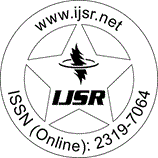Downloads: 109 | Views: 403
Research Paper | Microbiology | India | Volume 6 Issue 3, March 2017 | Popularity: 6.3 / 10
Detection of S. mutans and S. sobrinus from Dental Plaques Adhered on Zirconia, PFM and Ni-Cr Crown by RT-PCR
Shikha Gupta, Om Prakash, Dr. Raj Kumar Kalyan, Dr. Dev Kumar Verma, Dr. Jitendra Rao, Dr Chandkiram Gautam
Abstract: The purposes of this study was to detect S. mutans and S. sobrinus from Dental Plaques adhered on Zirconia, PFM and Ni-Cr crown by RT-PCR amplification. Supragingival and the subgingival plaque was taken from the crown site of the 118 participants from all the three groups who had crown restoration and were categorized as Group I (Zirconia) (27 cases), Group II (PFM) (49 cases) and Group III (Ni-Cr) (42 case), respectively by using sterile curettes (Gracey Curettes). The PCR amplified products were subjected to electrophoresis in agarose gel and visualized on a UV transilluminator. Patients (118) age ranged between 18 to 40 years divided into the three groups who had crown restoration and were categorized as Group I (Zirconia) (27 cases), Group II (PFM) (49 cases) and Group III (Ni-Cr) (42 case), respectively. The S. mutans and S. sobrinus was found to be present in 60.2 % and 44.9 % of cases respectively. In the present study, S. sobrinus alone was present only in 35.6 % of cases. A significant finding of the present study was presence of both S. mutans and S. sobrinus in 24.6 % of cases and 19.5 % were negative for both. Genomic DNA (gDNA) extracted from S. mutans was analyzed on 1 % agarose gel electrophoresis and found to be good quality and quantity off or further use. Total gDNA isolated from dental plaque underwent PCR amplification using primer pair specific to 16S rDNA of the genus Streptococci. One percent agarose gel electrophoresis depicts the positive PCR amplification at 712 bp when compared with standard 1kbp. Another PCR reaction was set using gtfB primers specific for S. mutans for functional gene identification.1.2 % agarose gel electrophoresis was done and a positive amplication was observed at 517 bp when compared to 1000 bp standards, depicting the presence of functional genes (gtf) in S. mutans. Among the mutans streptococci group, S. mutans and S. sobrinus are the most frequently isolated species from human dental plaque and are believed to be the major aetiological agents for tooth decay.
Keywords: Dental Plaques, Streptococcus Mutans, Streptococcus Sobrinus, Polymerase Chain Reaction, Crown
Edition: Volume 6 Issue 3, March 2017
Pages: 1928 - 1931
Please Disable the Pop-Up Blocker of Web Browser
Verification Code will appear in 2 Seconds ... Wait
